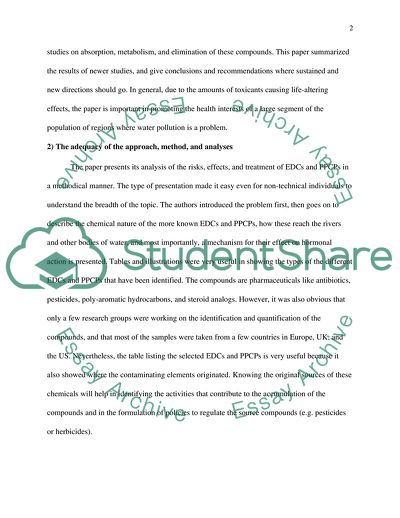Cite this document
(Review of Endocrine-Disrupting Compounds and Pharmaceuticals Coursework, n.d.)
Review of Endocrine-Disrupting Compounds and Pharmaceuticals Coursework. https://studentshare.org/environmental-studies/1729658-review-of-endocrine-disrupting-compounds-edcs-and-pharmaceuticals-and-personal-care-products-ppcps-in-the-aquatic-environment-implications-for-the-drinking-water-industry-and-global-environmental-health
Review of Endocrine-Disrupting Compounds and Pharmaceuticals Coursework. https://studentshare.org/environmental-studies/1729658-review-of-endocrine-disrupting-compounds-edcs-and-pharmaceuticals-and-personal-care-products-ppcps-in-the-aquatic-environment-implications-for-the-drinking-water-industry-and-global-environmental-health
(Review of Endocrine-Disrupting Compounds and Pharmaceuticals Coursework)
Review of Endocrine-Disrupting Compounds and Pharmaceuticals Coursework. https://studentshare.org/environmental-studies/1729658-review-of-endocrine-disrupting-compounds-edcs-and-pharmaceuticals-and-personal-care-products-ppcps-in-the-aquatic-environment-implications-for-the-drinking-water-industry-and-global-environmental-health.
Review of Endocrine-Disrupting Compounds and Pharmaceuticals Coursework. https://studentshare.org/environmental-studies/1729658-review-of-endocrine-disrupting-compounds-edcs-and-pharmaceuticals-and-personal-care-products-ppcps-in-the-aquatic-environment-implications-for-the-drinking-water-industry-and-global-environmental-health.
“Review of Endocrine-Disrupting Compounds and Pharmaceuticals Coursework”. https://studentshare.org/environmental-studies/1729658-review-of-endocrine-disrupting-compounds-edcs-and-pharmaceuticals-and-personal-care-products-ppcps-in-the-aquatic-environment-implications-for-the-drinking-water-industry-and-global-environmental-health.


